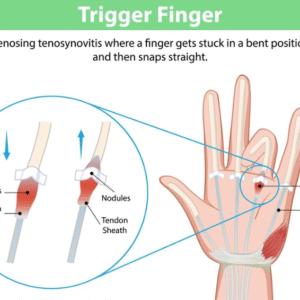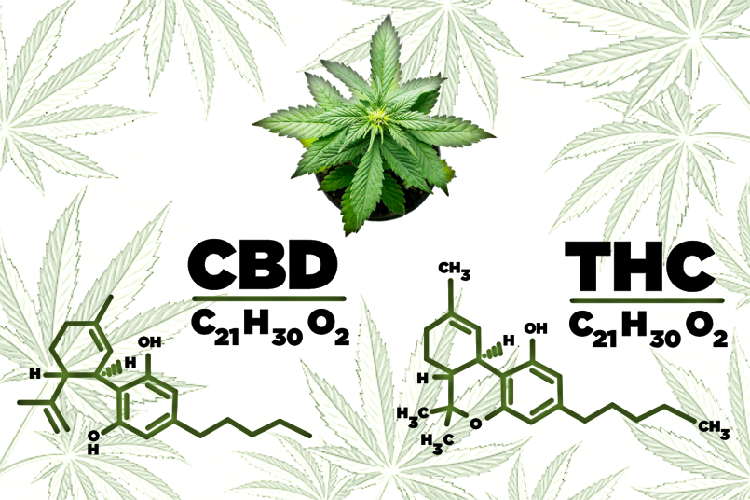It cannot be a secret that such stem cells hold importance, especially as the function of stem cell in the medical field as the potential cure has made a significant difference. With such a potential holds, researchers are now striving to prepare stem cell treatment which is safe and efficient. Through differentiation process stem cells are capable of changing to many cell types for several purposes such as formation of blood and bone cells.
Stem cell treatment is not a benign process and before deciding to go for this process one has to fully understand the risks. Tell these with your physician, and ensure that this surgery will be covered by the insurance that you have. Among the stem cell therapies applied since the 1960s for the treatment of blood cancer and immune system disorders the bone marrow transplantation is ;Another form of stem cell therapy termed as stem cell regeneration also uses stem cells.
What are stem cells?
Stem cells are the special types of cells located in all parts of our bodies that have the capability to transform into the tissue cells like muscle, tendons, bones and cartilage cells etc. They also can also endlessly proliferate, producing further stem cells if necessary or turning into specialized cells through the process referred to as differentiation. A stem cell’s main function is related to the body’s ability to self heal whereby damaged or diseased cells are removed and replaced with healthy ones.
Adult stem cells can be distributed all over the body, in different body tissues such as those of bone and cartilage, blood, derma and adipose. Though they are not as potent as embryonic stem cells, the adult cells are also capable of giving rise to certain cell in each tissue which consists of. Stem cells are used in the treatment of some diseases or conditions by health care facilities. For more information on what is stem cells and how they can assist you to gain better health, contact a professional stem cell physicians or a specialist today!
Hemangioblasts currently are employed to treat blood disorders and cancer whereas fibroblast like stem cells may be useful to cure diseases affecting joints such as osteo arthritis. As for the researchers, they try to understand how embryonic mesenchymal cells can be reprogrammed into other specific therapeutic cells for the therapy purposes. Use of this cells can also be applied when testing new drugs before giving them a try due to safety and effectiveness testing. This research may cause development of better medicines than the ones available in the market now.
How Do Stem Cells Function?
Researchers are working on ways of how to control stem cells to take specific forms so as to form various organs and tissues whereby treatment of diseases is likely to be administered. For example, it is used in the efforts of its transformation into cells that secrete insulin for managing diabetes, heart muscle repair cells after heart attack, and even testing of drugs before rounding up to offering clinical trials to people volunteering.
Human embryos, amniotic fluid and bone marrow contain stem cells. Mainly there are two types of stem cells namely the embryonic cells which have the ability to become any cell in your body as they are pluralipotent while the adult cells we can get from bone marrow for example are not as potent but also help in producing other basic functions like blood or helping to repair some body tissue.
Deploying stem cells is a great opportunity to genetically mend mutations that cause congenital diseases, and avoid transplant rejection and directly inject into the patient to modulate their immune response to free themselves of autoimmune diseases or to prevent transplant rejection. However, at present, stem cell based treatments have to face a number of hurdles in order to made available to the affected individuals.
Why Are Stem Cells Important?
Stem cells contain capabilities of differentiation whereby they differentiate to form the various cells within our bodies. This distinctive feature makes the field of regenerative medicine possible, regenerative therapy, dealing with replacing damaged or diseased tissues with fresh healthy ones. Chronic diseases including spinal cord injuries, burns, heart diseases, multiple sclerosis, arthritis as well as inflammations may be some of the diseases that can be handled through the use of regenerative medicine. It is now possible to get in touch with one of the world stem cell research authorities and learn about stem cell therapy and how it is done.
This because stem cell therapy is a common cure that doctors apply in blood and bone marrow disorders through stem cell transplantation that replaces depleted hematopoietic cells in the body due to chemotherapy and radiation treatments of leukemia, lymphoma and other blood cancers.
Biologists are concluding that with stem cell technology, human organs and tissues could be produced artificially and hence reduce human reliance on donors and removing the risk of rejection. Stem cells are being used to re-program the immune systems in people with autoimmune diseases ranging from multiple sclerosis or lupus. This is an attempt to enhance, if not altogether treat these conditions using immunomodulation therapies.
Stem cells can produce a specialized cells which are involved in different processes within the human body. All stem cells are not the same, one forms the entire body while another form tiny blood vessels, still another creates nerve cells so that an individual can interpret signals from his surroundings. In treatment and potentially curing of diseases, medical researchers rely on stem cells’ uniqueness. Both bone marrow and blood contains adult cells. They create red blood cells that transport oxygen in your body, white blood cells for combating diseases, and platelets which cause clotting to occur in case of injuries and lead to formation of blot clot. In addition, adult cells have several unique functions, the capacity to repair the dead cells that in daily activities or diseases such as Parkinson’s are sloughed off.
Newborn babies have many stem cells in umbilical cord and blood, the cord blood cells can be harvested after births by taking an ordinary blood test of the umbilical cord, processing it in a machine which separates cells and finally freezing it. Due to researches in organ plantation and genetic engineering, scientists are able to create stem cells. Human embryonic cells are derived from fertilization of an egg by a sperm to form an zygote. These cells can in effect be reprogrammed to pluripotent cells and therefore make any cell in the body.
How to use stem cells to treat a disease?
Stem cells can cure or mitigate many illnesses by replacing defective cells or generating new specialized cells that can repair tissues, by limiting inflammation in the body, and stimulating the body’s healing mechanism, for instance in fibromyalgia, spinal cord injury, chronic pain syndrome, and kidney disease. Different serious diseases including Alzheimer’s, Parkinson’s, multiple sclerosis, and cancer are being researched with focus on the possible utilization of cells. Also, stem cells can be used to mimic genetic diseases or disabilities while testing the safety and efficiency of new medications.
However, the process from translation of stem cell therapies from lab, to clinic can be long and arduous. In so many instances many stem cells have to endure differentiation, that is, tricks have to be used to transform the stem cell to a certain type of cell and then people get to test it out on humans. Various techniques are used by scientists to enhance increased speed of differentiation and work with the drug companies to come up with new safe treatments; they are also researching on how the use of adult stem cells to fight aging.
How to Keep Stem Cells Healthy?
Researchers are trying to find ways on how to control stem cells to develop into a certain particular cell, which is useful in treating diseases. This is not easy, and cells should be checked exhaustively before transfer to human beings – for instance, insulin producing cells must go on producing insulin after transfer.
The cells are called embryonic cells and have the ability to transform itself into any form or cell type and for this reason are very relevant in the field of research. The issue of ethics has been a subject of controversy on the use of embryonic stem cell research. However, the current advances of induced pluripotent stem (iPS) cell technology allow researchers to employ adult cells eliminating ethical issues connected with the application of embryo cells.
Stem cell therapy is a very effective method of treatment, which has been widely used to cure different diseases including the blood disorders such as leukemia. A bone marrow transplant works for leukemia by replacing the bad blood cells with good ones; there are procedures that patients are given stem cell treatments and there are measures through which patients can enhance the production of cells in their bodies through taking healthy foods and performing exercises.
Are you seeking stem cell treatment for knee or back pain? Reach Out to one of the leading integrative medical centers today for the best-suited stem cell therapy and to learn more about what is stem therapy and the types of stem cells.
Important Things to Know About Stem Cells
They are unspecialized cells that can differentiate in to specialized cells; for instance, there is stem cell that forms blood cells and there is another one that forms bone cells. They can be used to repair tissues in the body or treat diseases such as fibromyalgia when they are again injected into the body. Stem cell research is one of the most promising in the field of various diseases’ treatments. Some of the possible uses are growing new liver cells, using stem cells to transplant organs, with minimized chances of rejection since the cells come from the patient’s body, and sexual problems, like sperm or egg production.
It is act as a viable therapeutic intervention for injuries in the orthopedic system. It is understood that when cord blood is introduced into the body, it transformed into different cell types that work like tendons, ligaments and even bones and thus realign the joints without having to resort to operations. Stem cell therapy has already benefited many patients with some health conditions and the benefits are inclined mostly towards blood diseases. Stem cell treatment, that is, bone marrow transplants have been known to help a lot of patients replace unhealthy blood cells to healthier ones. Surgeons have also found out that stem cells exist in almost all the body tissues and are constantly replacing these tissues.
Stem cells especially the embryonic cells have the potential in treating diseases; however the use of embryonic cells is still a topic of debate since their derivation entails the use of human embryos. Researchers seek a solution to this issue and one of the potential solutions offered by the members of the scientific community is the reprogramming of adult stem cells into the pluripotent type. One should be informed about various forms of cells and how they work in case a person is intending to undergo such form of treatment. Visit an expert today!
It is special type of population in the body, have the unique ability to create new cells, specialized cells and thus offer the possibility to treat or cure diseases and injuries that were previously deemed untreatable. Stem cell treatment has established itself an important tool in the discovery of new drugs. The discovery of living cells means that drug researchers can experiment on various chemicals on the living cells before going to the animals – this reduces the costs of testing on human beings while still making progress.
Stem cell therapies, while unable to provide a complete cure for chronic ailments like autoimmune diseases such as rheumatoid arthritis or multiple sclerosis, can significantly improve the quality of life for patients by slowing down disease progression over prolonged periods. At times, these therapies have even shown the ability to reverse the advancement of diseases! While it may take some time before stem cell treatments become widely accepted in mainstream medical practices, advancements in this field are rapidly progressing. Researchers are continuously enhancing techniques and exploring different types of cells, promising a bright future for regenerative medicine.
Ongoing extensive research focuses on stem cells as potential remedies for various conditions like autoimmune disorders, inflammatory diseases, and neurodegenerative illnesses including Crohn’s Disease, Multiple Sclerosis, Lupus, Parkinson’s disease, Alzheimer’s disease, and aiding in stroke recovery. Additionally, there is hope that cells could reduce inflammation linked to fibromyalgia, potentially decreasing pain signal transmission to the brain and improving the overall well-being of individuals with fibromyalgia while expediting their return to normal activities.
Conclusion
The exceptional ability of stem cells to transform into specialized cells enables them to repair damaged tissues accurately and reproduce effectively. This unique characteristic presents significant therapeutic possibilities for treating various diseases. It is recommended that individuals consult with experts to understand more about stem cell therapy and its potential benefits in leading a healthier life.
Stem cell therapy is being investigated as a prospective treatment method in clinical trials targeting numerous conditions related to blood disorders such as leukemia or lymphoma; protein abnormalities in blood; glandular issues like glandular fever or hormonal imbalances; along with neurological concerns like ALS or Parkinson’s disease.
Beyond their remarkable healing capabilities, stem cells play a crucial role in helping scientists comprehend how diseases develop and how they can be effectively managed—underscoring the importance of ongoing stem cell research in advancing medical knowledge. To delve deeper into the phenomenon of cells and receive tailored treatment options, consider visiting an experienced integrative medical center specializing in this innovative field.






